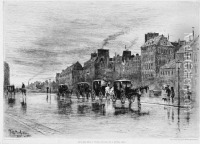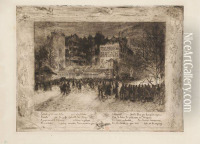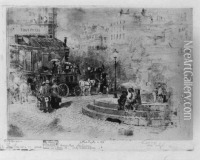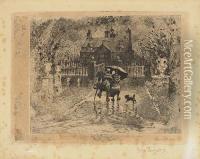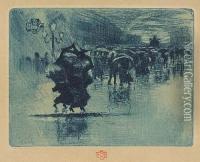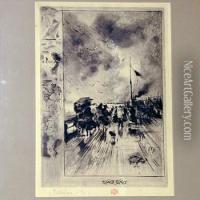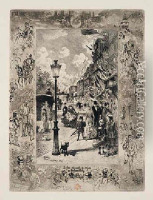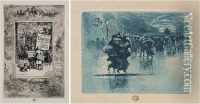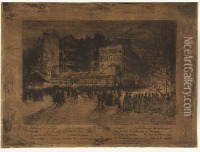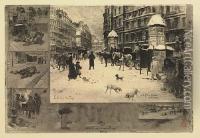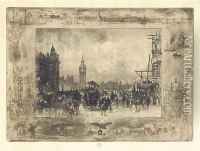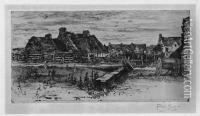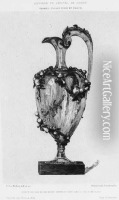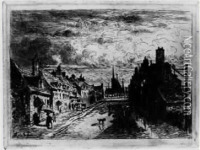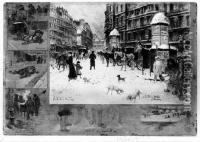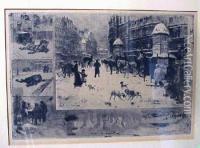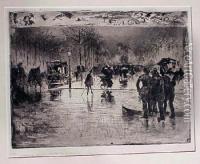Felix-Hilaire Buhot Paintings
Felix-Hilaire Buhot was a French printmaker, illustrator, painter, and etcher renowned for his innovative etchings and aquatints that captured the ambiance of late 19th-century urban life. Born on July 9, 1847, in Valognes, Normandy, Buhot showed an early talent for art and was initially trained by his father. He later moved to Paris to pursue formal studies at the École des Beaux-Arts and trained under renowned artists such as Jean-Léon Gérôme.
Buhot's artistic career was marked by his fascination with the effects of weather and atmosphere in urban settings, which he masterfully integrated into his works. He is especially noted for his 'marginalia,' small vignettes or symbols that he included in the margins of his prints, providing additional narrative elements to the central image. Buhot's prints often featured bustling city scenes, seascapes, and landscapes, depicting the mood and the effects of fog, rain, snow, and mist.
Throughout his career, Buhot experimented with various printing techniques, and his innovative approach brought him recognition in both Europe and America. He was particularly admired for his ability to create a sense of depth and texture using etching and aquatint, a testament to his skill as a printmaker. His works were exhibited in the Paris Salon and he was associated with the Société des Aquafortistes, a group that played a significant role in the revival of etching as an art form in France during the second half of the 19th century.
Buhot's health began to deteriorate in the later years of his life, which affected his productivity. However, his contribution to printmaking continued to influence artists well into the 20th century. Felix-Hilaire Buhot passed away on March 26, 1898, in Paris. Today, his works are held in major museums and collections around the world, appreciated for their technical prowess and evocative portrayal of the everyday life of his time.
